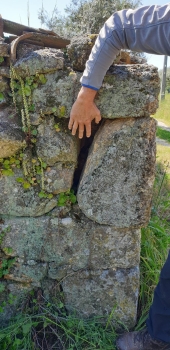I am aware that most stone walls in New England have sat unmaintained for generations without collapsing, or without much collapse.
Hello Joshua, et al,
"Frost Heave" is often a "misnomer" in many locations and not...necessarily...all that is going on. That is why the many stone walls around the world...not just New England do not move. Many of these stone walls sit on...or near...bedrock, and/or a "mineral soil," not a "clay soil." The clay soil is part of the revelation...clays are an expansive soil when they get wet...even without ice to exaggerate this expansion. Get a "bentonite" clay in a soil and you have way more to worry about than frost as this is an extremely expansive form of clay...yet has many positive uses as well.
So the real issue is clay and/or water...if neither are present you have little to worry about. So the goal of any design is finding the clays, and removing the standing water which can freeze and expand.
No water...No heave...No clay...no heave....
Could not recommend the gravel trench more!! Best foundation system yet devised and still used today on just about every continent.
Regards,
j







